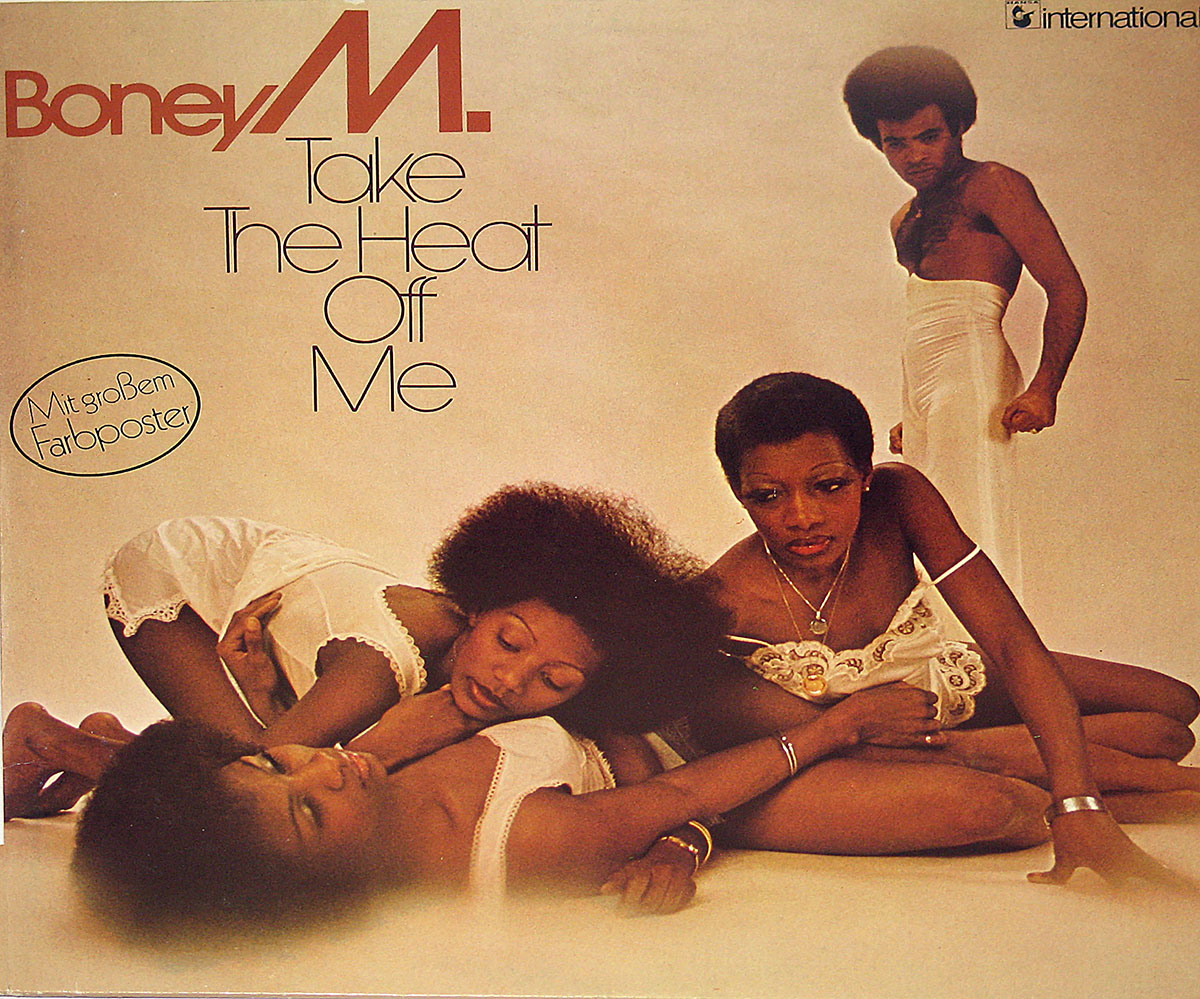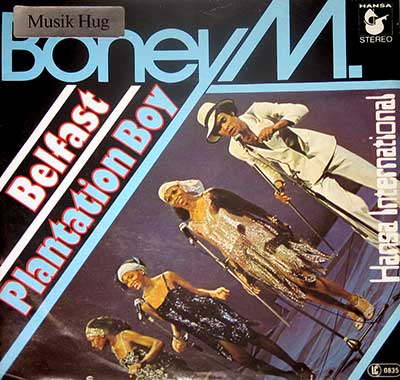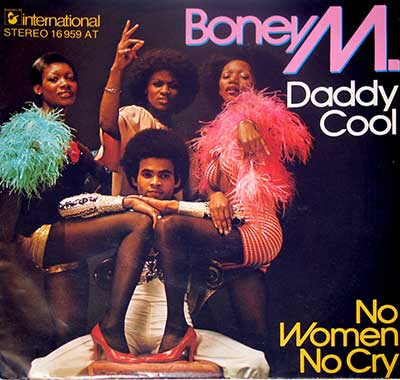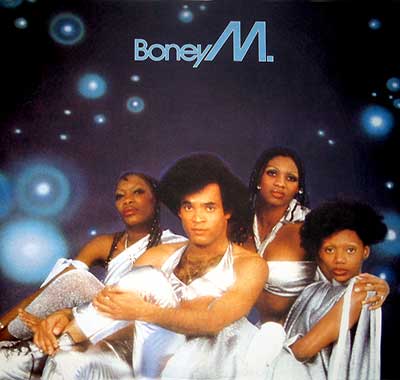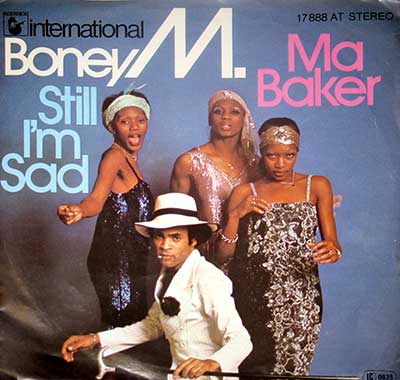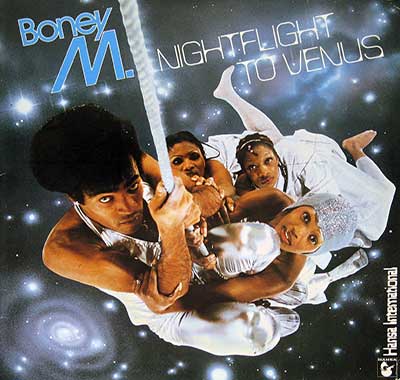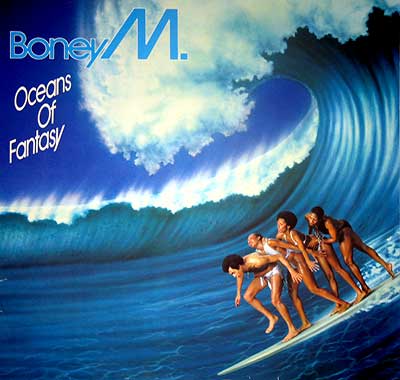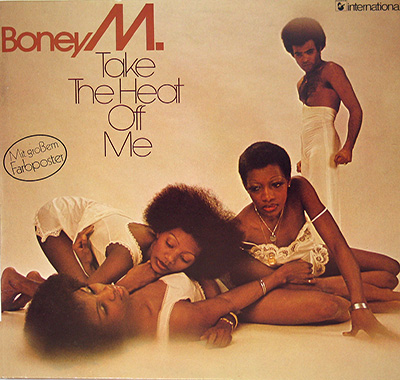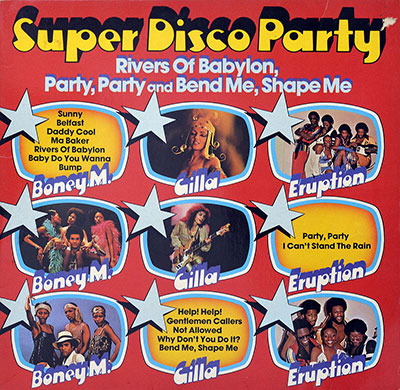Boney M Ñ ÒTake The Heat Off MeÓ (12" Vinyl LP) Album Description:
On ÒTake The Heat Off Me,Ó Boney M arrives fully formed: sleek, catchy, and engineered for motion. The record works like a night trainÑsteady pulse, bright lights, and no interest in delay. It is a debut that treats the studio as both toolkit and stage, where rhythm is the lead character and voices ride it like neon.
Historical Context
Mid-1970s Europe was dancing out of the long shadow of recession, and clubs from Hamburg to Paris wanted energy fast. Euro-disco obliged with clockwork beats and melodies built for instant recall. Alongside Boney M, groups such as Silver Convention (with their 1975 hit ÒFly, Robin, FlyÓ), Gibson Brothers (ÒCubaÓ), and Penny McLean of Silver Convention fame helped shape the sound with lush strings, repetitive basslines, and female vocal harmonies. These acts shared producers, arrangers, and often studio musicians, which led to cross-pollination of styles. Silver ConventionÕs minimalist lyrical approach influenced Boney MÕs early chant-driven hooks, while Boney MÕs blend of reggae rhythms and disco energy offered a template that other acts would adapt. In this climate, ÒTake The Heat Off MeÓ reads like a dispatch from the continental floor: four-on-the-floor, sweetened hooks, and cosmopolitan ease. The album was a major seller outside the United States, proof that these grooves understood the language of export.
Musical Exploration & Genre
Filed squarely under 70s Euro-Disco, the set still wanders with intent. ÒDaddy CoolÓ is the mission statementÑsyllabic chant, elastic bass, a melody that keeps pointing back to the dance. ÒSunnyÓ tilts soul classicism toward mirrored ceilings, while ÒNo Woman, No CryÓ borrows reggaeÕs sway and streamlines it for continental tempo. ÒFeverÓ turns cool-jazz sultriness into a strobe-lit whisper. Even the title track presses heat and glide into a single, ventilated groove. Across the album, percussion is dry and punctual, strings are lacquered, and the bass behaves like a polite engineÑnever stalling, never showboating.
Songs in Focus
ÒDaddy Cool.Ó The hook is a logo. Consonants are percussion; the chorus lands like signage you can dance to. ÒSunny.Ó A cover recast as uplift machinery: crisp hi-hat, buoyant strings, and voices that smile on the beat. ÒBaby Do You Wanna Bump.Ó A long-form floor exerciseÑdeep throb, minimal lyric, hypnosis as arrangement. ÒGot a Man on My MindÓ / ÒLovinÕ or LeavinÕ.Ó Mid-tempo glide, where background vocals operate like chrome trimÑdecorative, but essential to the silhouette.
Production Team
The album was produced by Frank Farian, who presides like a foreman with painterÕs instinctsÑprecision first, color second, feel always. Song credits hint at the shopÕs inner wiring: George Reyam (Hans-Jšrg Mayer) alongside Farian on the signature single; lyricist Fred Jay shaping several cuts. The workflow favors layered parts over band-in-a-room capture: stacked harmonies, punctual handclaps, and arrangements that carry the listener through sections as if on conveyor beltsÑsmooth transfers, no jolts.
Recording Studios
Sessions took place at Union Studios, Munich and EuropaSound Studio, Frankfurt, facilities known for their cutting-edge recording technology of the era. Here, West German engineering met discoÕs demand for precision. The drum sound is tailored for repetition without fatigue; strings sit just forward of the beat to suggest lift. Vocals are blended as architectureÑlead lines prominent, backgrounds welded tight so they move like one body.
Image, Vocals & Controversies
Boney MÕs polish sparked recurring debates about who sang what and how much of the groupÕs persona was assembled in the control room. The album doesnÕt settle that argument; it renders it secondary. What you hear is a studio-forward project where identity is a composite: charismatic faces, disciplined session craft, and a producer intent on making records that behave like magnets.
Why It Works
Because every element serves momentum. Melodies are short-haul and unforgettable, rhythms are frictionless, and the production gives vinyl a kind of aerodynamic sheen. ÒTake The Heat Off MeÓ doesnÕt ask you to analyze; it asks you to moveÑand then makes analysis part of the afterglow.
